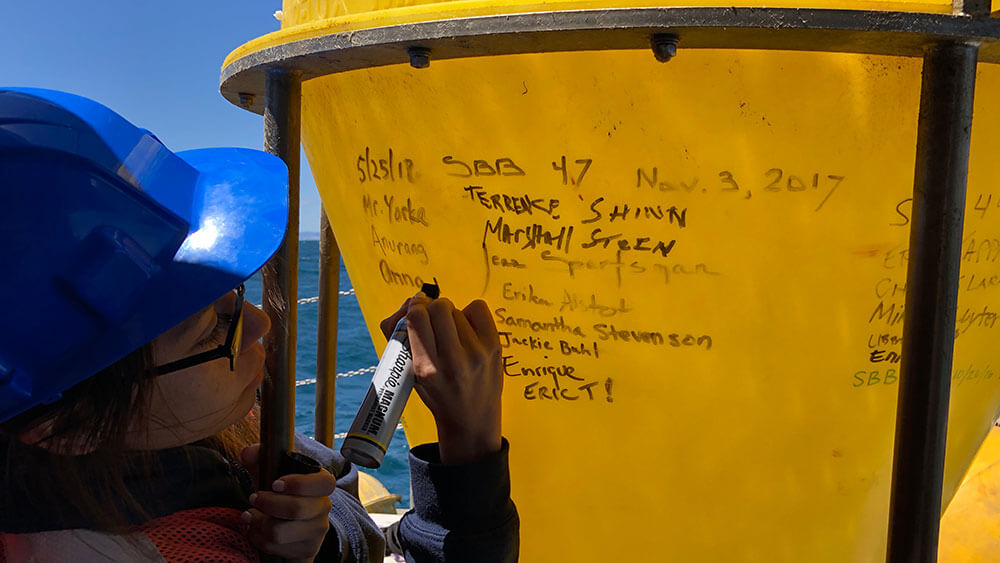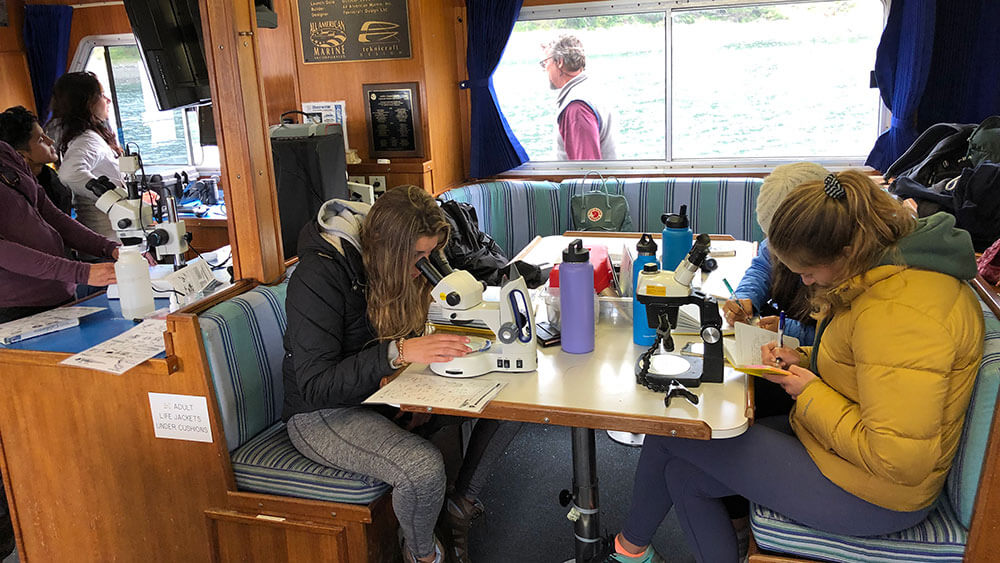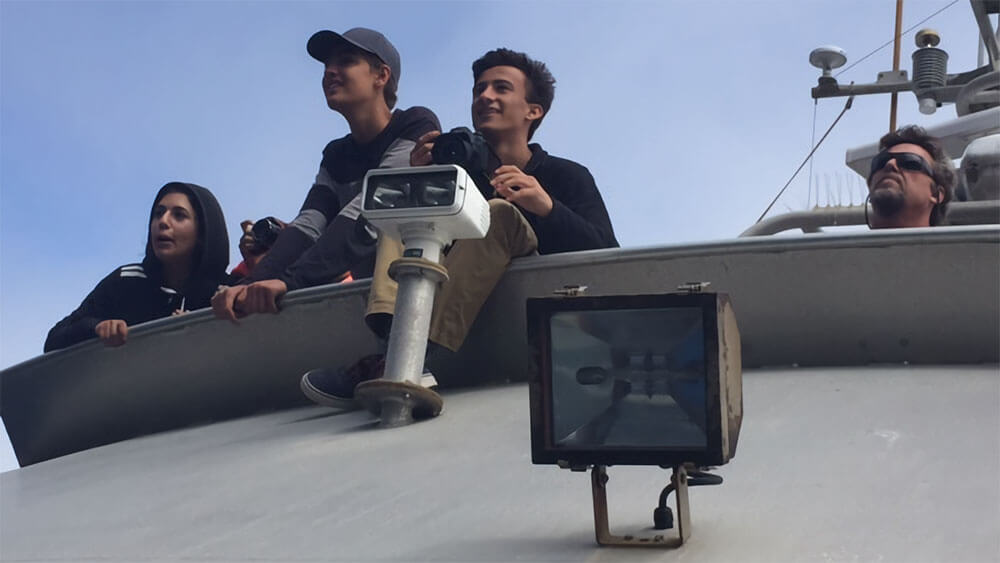Students at Sea
High School and college students are encouraged to participate in active research aboard R/V Shearwater to explore different career pathways and learn how science is used to address different resource protection issues that threaten the health of our ocean.
Sediment Trap Research
Sediment trap research examines the impact of ocean acidification on calcifying organisms at the base of the food web (e.g., planktonic foraminifera) both during the present day and over the last 300 years. This work allows students to better understand how current and future changes in climate and ocean acidity impact biological production and speciation of organisms vital to the health and biodiversity of the sanctuary.

Eelgrass Surveys and Harmful Algal Bloom Monitoring
Santa Barbara City College students enrolled in a field methods course head out aboard Shearwater to learn about different field techniques used to monitor marine mammals, seabirds, eelgrass meadows, and harmful algal blooms in the sanctuary. Students collect plankton samples, record all marine mammal sightings, and pilot ROVs along transect headings to characterize eelgrass meadows in Prisoners Harbor, Santa Cruz Island.

Climate Change Research for Teens on R/V Shearwater
High school students participating in Santa Barbara Museum of Natural History's Quasars to Seastars program were mentored by scientists from two ocean acidification research labs from University of California Santa Barbara (UCSB) aboard R/V Shearwater. Researchers discussed studies on coccolithophores (plankton) and sea water chemistry in the Santa Barbara region. Kevin Johnson from Gretchen Hofmann's lab collects pteropods, a swimming marine snail, that are an indicator species for ocean acidification. Additionally, Sarah Amiri, with the sanctuary, collects phytoplankton samples to look for plankton that can cause harmful algal blooms.


